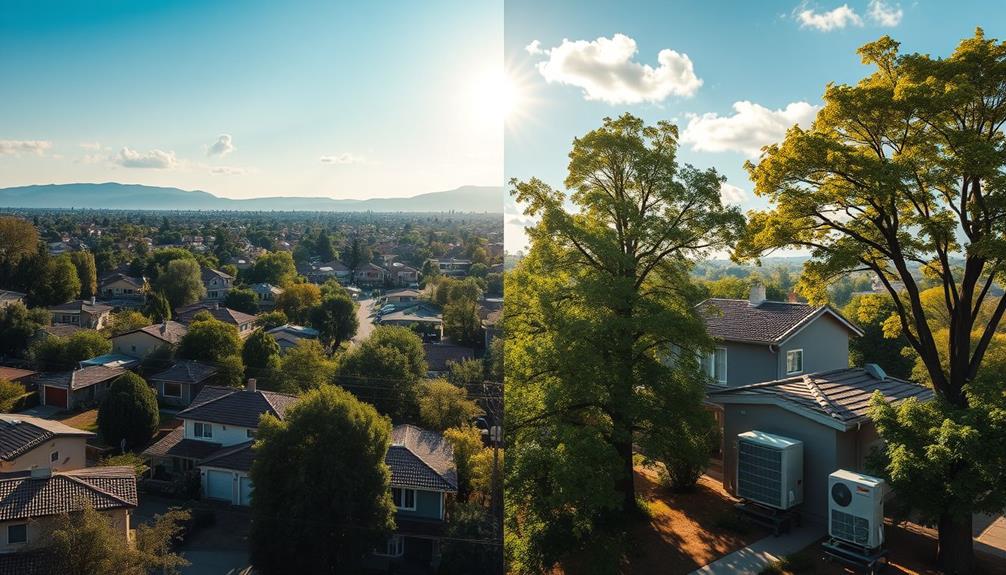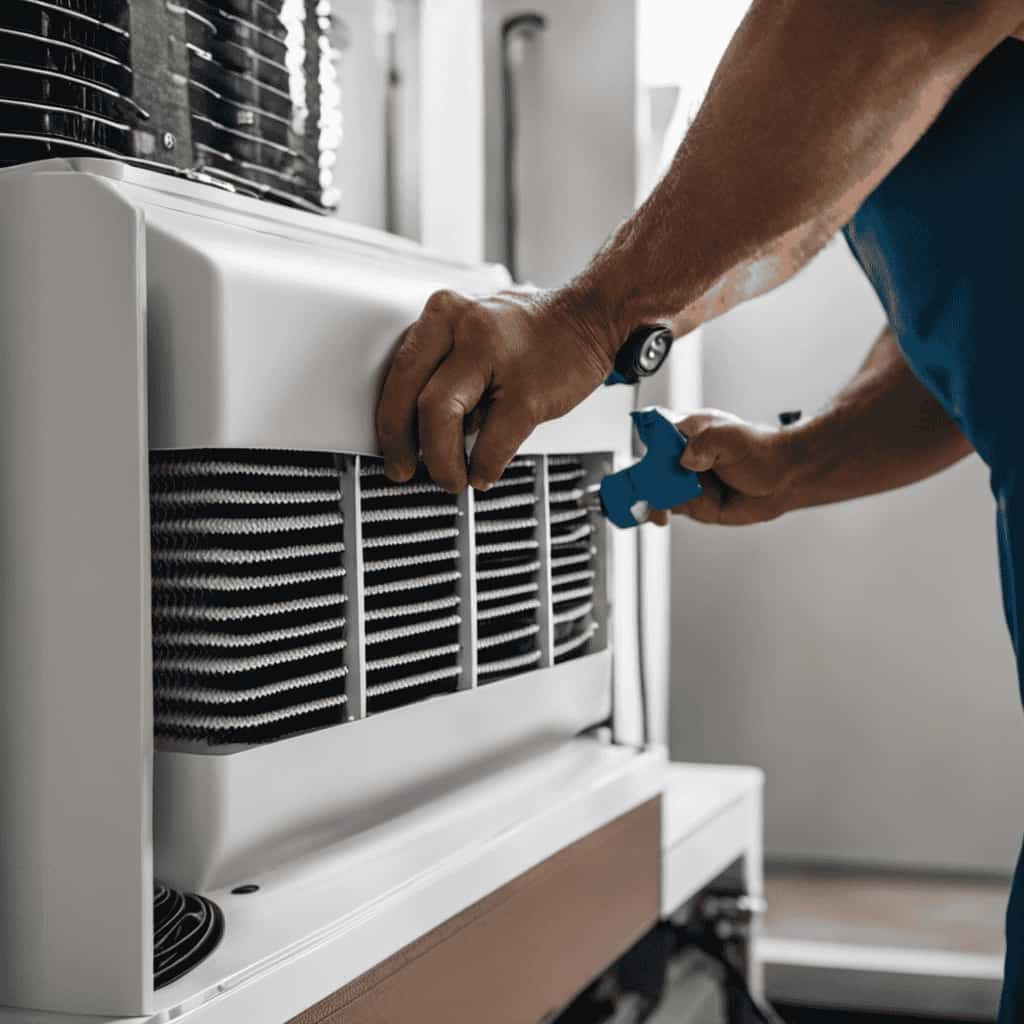
Welcome to our comprehensive manual on heat pump home heating solutions! You may believe that maintaining warmth while conserving energy is a difficult task, yet get ready to be delightfully astonished.
We’ll show you how heat pumps work and the advantages they bring to your home.
From different types of heat pumps to tips on sizing and troubleshooting, we’ve got you covered.
So, get ready to discover the innovative world of heat pump home heating and start enjoying the benefits it offers!
Key Takeaways
- Heat pumps are a type of home heating system that work by transferring heat from one place to another, rather than generating heat themselves.
- Heat pump home heating offers several advantages, including energy efficiency, lower operating costs, and the ability to provide both heating and cooling.
- There are different types of heat pumps available for home heating, including air source heat pumps, ground source heat pumps, and hybrid heat pumps.
- Proper sizing and installation of a heat pump is important for optimal performance and efficiency, and professional assessment is recommended.
How Heat Pumps Work
We’ll start by explaining how heat pumps work.
Heat pump technology is an innovative and efficient way to heat and cool homes. Unlike traditional heating systems that generate heat, heat pumps use electricity to transfer heat from one place to another. They extract heat from the air or ground and distribute it throughout the home, providing both heating and cooling capabilities. This process is accomplished through the use of a refrigerant that absorbs and releases heat as it circulates through the system.
The benefits of using heat pumps are numerous. They’re highly energy-efficient, saving homeowners on their energy bills. Heat pumps also have a lower environmental impact compared to fossil fuel-based systems, reducing greenhouse gas emissions. Additionally, they provide consistent indoor comfort and can be used in conjunction with other renewable technologies such as solar panels.
Advantages of Heat Pump Home Heating
We can enjoy several advantages by choosing heat pump home heating. Here are the top four benefits of this innovative system:
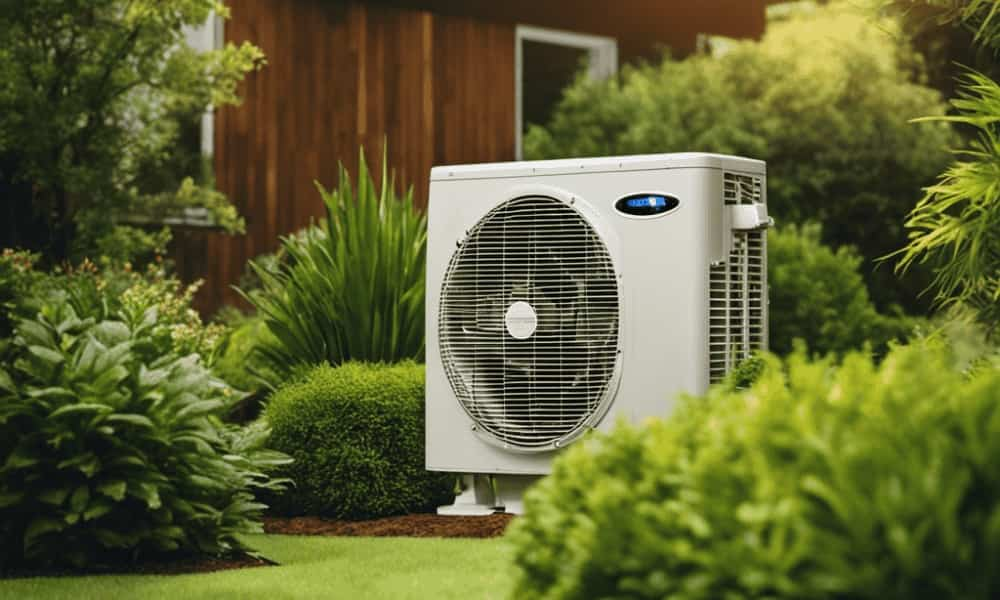
-
Energy Efficiency: Heat pump home heating systems are highly efficient as they transfer heat from the outside air or ground into your home. This process requires less energy compared to traditional heating systems, resulting in lower energy consumption and reduced carbon footprint.
-
Cost Savings: By utilizing heat from the environment, heat pumps can provide significant cost savings on your energy bills. They require less electricity to operate than other heating systems, leading to lower monthly expenses and long-term savings.
-
Year-Round Comfort: Heat pump home heating systems can also act as air conditioners, providing both heating and cooling capabilities. This versatility ensures comfort throughout the year, regardless of the season.
-
Environmentally Friendly: With their energy-efficient operation and reduced reliance on fossil fuels, heat pump home heating systems contribute to a greener environment. By choosing this technology, you can play your part in reducing greenhouse gas emissions and promoting sustainability.
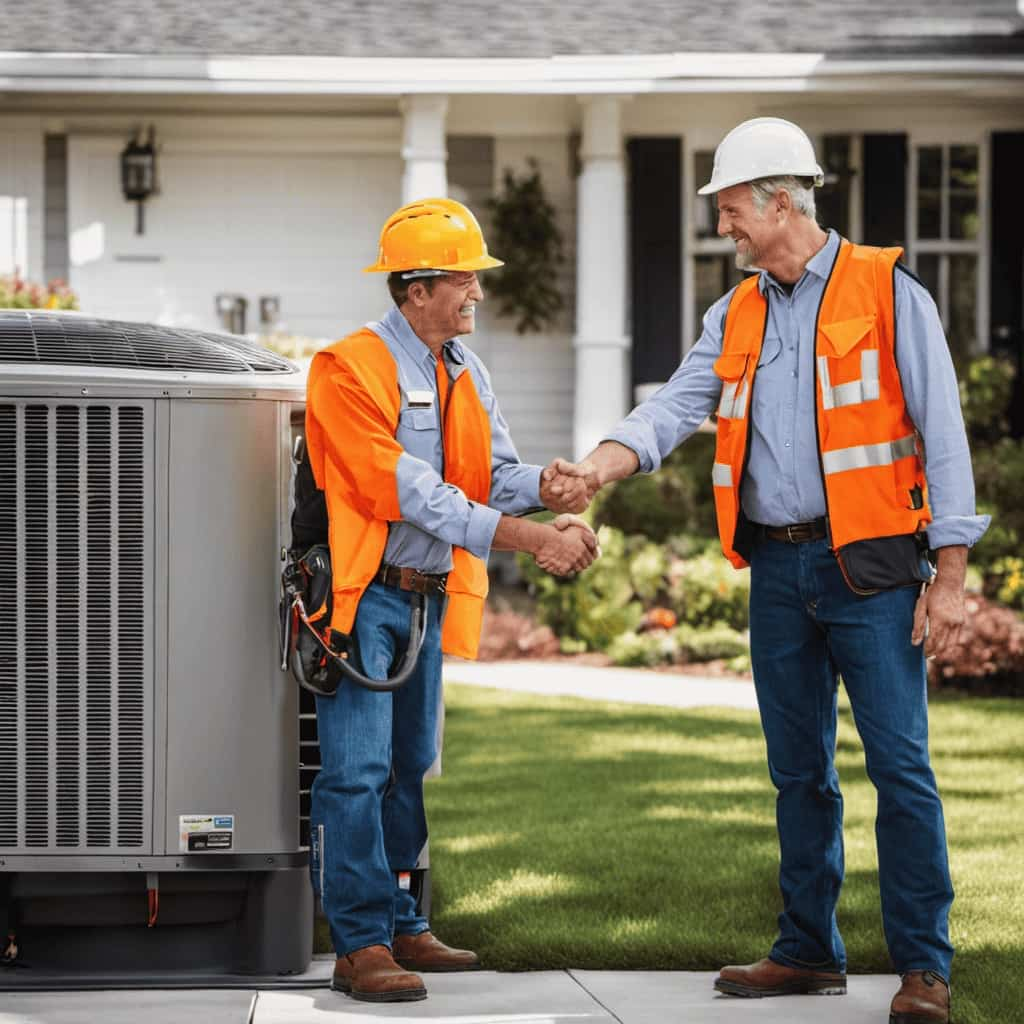
With these advantages in mind, let’s now explore the different types of heat pumps for home heating.
Types of Heat Pumps for Home Heating
Let’s explore the various types of heat pumps available for home heating. Heat pumps come in different configurations to suit the needs of every home. Here is a breakdown of the four main types:
| Type | Description |
|---|---|
| Air Source | Draws heat from the outdoor air and transfers it indoors. It’s cost-effective and ideal for mild climates. |
| Ground Source | Utilizes the constant temperature of the ground to heat and cool the home. It is highly efficient but requires a larger upfront investment. |
| Water Source | Extracts heat from a water source, such as a lake or pond, to provide heating and cooling. It is energy-efficient and works well in moderate climates. |
| Dual Fuel | Combines a heat pump with a gas or oil furnace for optimal efficiency. It automatically switches to the backup system in extreme temperatures. |
To ensure your heat pump functions optimally, regular maintenance is crucial. It includes cleaning or replacing filters, inspecting ducts, and checking refrigerant levels. Additionally, don’t forget to explore heat pump rebates available in your area, which can help offset the installation costs.
Now that we understand the types of heat pumps, let’s move on to the next step: sizing a heat pump for your home.
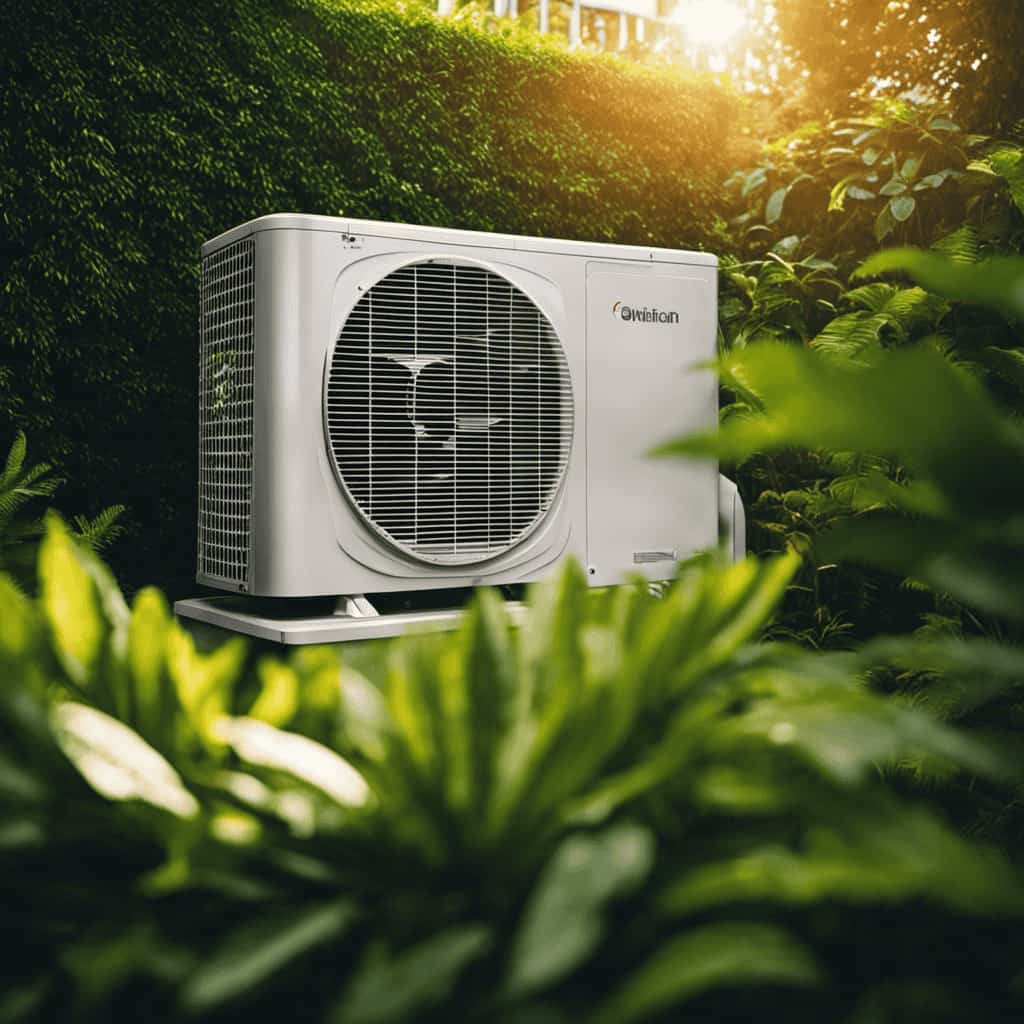
Sizing a Heat Pump for Your Home
Determining the correct size of a heat pump for our home is essential to ensure efficient and effective heating. When sizing a heat pump, there are several factors to consider:
-
Heat Pump Capacity: It’s crucial to choose a heat pump with the appropriate capacity for your home. This is determined by factors such as the size of your home, insulation levels, and local climate conditions. Oversized or undersized heat pumps can lead to inefficient operation and higher energy costs.
-
Heat Loss Calculation: Conducting a heat loss calculation is necessary to determine the amount of heating required for your home. This calculation takes into account factors such as the size and layout of your home, insulation levels, and windows.
-
Professional Assessment: It’s recommended to seek the expertise of a professional HVAC technician who can accurately assess your home’s heating needs and recommend the right size of heat pump.

-
Consider Installation Cost: While it’s important to choose a heat pump that meets your home’s heating requirements, it’s also crucial to consider the installation cost. Opting for a heat pump that’s too large may result in higher upfront costs, while a smaller heat pump may have a lower installation cost but higher running costs.
Understanding Heat Pump Efficiency Ratings
When considering heat pump efficiency ratings, it’s important to understand the factors that contribute to a heat pump’s overall performance.
Heat pump efficiency standards are set by organizations such as the Air Conditioning, Heating, and Refrigeration Institute (AHRI) and the U.S. Department of Energy (DOE). These standards help consumers compare the efficiency of different heat pump models.
The efficiency of a heat pump is affected by various factors, including the type of refrigerant used, the size and design of the heat exchanger, and the technology used for defrosting.

Additionally, proper installation and regular maintenance are crucial for optimal performance. By understanding these factors, homeowners can make informed decisions when selecting a heat pump for their home.
Now, let’s move on to the next section to discuss installation considerations for heat pump home heating.
Installation Considerations for Heat Pump Home Heating
Before beginning the installation process, we recommend consulting with a professional to ensure proper placement and sizing of the heat pump for optimal performance. Here are some best practices and considerations to keep in mind when installing a heat pump for your home:
-
Conduct a thorough assessment of your home’s insulation and air sealing. Proper insulation and sealing can significantly impact the efficiency of your heat pump, reducing energy consumption and installation costs.

-
Choose the right size heat pump for your home. An oversized or undersized unit can lead to inefficiency, higher installation costs, and increased energy consumption.
-
Consider the location of the heat pump. It should be installed in an area with proper airflow and away from obstructions. Adequate clearance is necessary for optimal performance and easy maintenance.
-
Hire a professional installer experienced in heat pump installation. Proper installation is crucial for the longevity and efficiency of your system.
By following these best practices, you can ensure a successful installation that maximizes the performance of your heat pump.

Now let’s explore how to maintain your heat pump for optimal performance.
Maintaining Your Heat Pump for Optimal Performance
To ensure optimal performance, we recommend regularly cleaning and inspecting your heat pump. Proper maintenance is essential for keeping your heat pump running efficiently and extending its lifespan. Here are some heat pump maintenance and troubleshooting tips to help you keep your system in top shape.
First, make sure to clean or replace the air filters regularly. Clogged filters can restrict airflow and reduce the heat pump’s efficiency.
Next, check the outdoor unit for any debris, such as leaves or dirt, and remove them if necessary. Additionally, inspect the indoor and outdoor coils for any buildup of dirt or dust and clean them if needed.

It’s also important to check the refrigerant levels and ensure they’re within the manufacturer’s recommended range. Low refrigerant levels can indicate a leak, which should be addressed promptly by a professional technician.
Lastly, schedule regular professional maintenance for your heat pump. A trained technician can perform a comprehensive inspection, identify any potential issues, and make necessary repairs or adjustments to optimize performance.
Troubleshooting Common Issues With Heat Pump Home Heating
We can troubleshoot common issues with heat pump home heating by identifying the problem and taking the necessary steps to address it. Here are four troubleshooting techniques to help you resolve common problems:
-
Insufficient heating: Check if the thermostat is set correctly and make sure there are no obstructions blocking the airflow. Additionally, ensure that the heat pump isn’t in defrost mode.

-
No heat at all: Verify that the power supply is connected and that the circuit breaker hasn’t tripped. It’s also important to check the air filters for dirt and debris, as clogged filters can restrict airflow and affect heating performance.
-
Uneven heating: Check the vents and registers to ensure they’re open and unobstructed. If the problem persists, there may be an issue with the heat pump’s refrigerant levels or the distribution system, requiring professional assistance.
-
Unusual noises: If you hear strange noises, such as grinding or squealing, it could indicate a problem with the motor or other mechanical components. Contact a qualified technician to diagnose and repair the issue.
By troubleshooting these common problems, you can ensure optimal performance and efficiency for your heat pump home heating system.

Now, let’s delve into comparing heat pump home heating to other heating solutions.
Comparing Heat Pump Home Heating to Other Heating Solutions
Our goal is to compare heat pump home heating to other heating solutions to determine the most efficient and cost-effective option for homeowners. When comparing heat pump home heating to traditional furnaces, there are several key factors to consider. Firstly, heat pumps operate by transferring heat from the outside air or ground into the home, making them highly efficient. In contrast, traditional furnaces burn fuel to generate heat, which can result in higher energy costs. Additionally, heat pumps offer the added benefit of providing both heating and cooling capabilities, eliminating the need for separate systems. To further explore the cost effectiveness of heat pump home heating, let’s compare the average annual operating costs of different heating solutions in the table below:
| Heating Solution | Average Annual Operating Cost |
|---|---|
| Heat Pump | $800 |
| Natural Gas | $1,200 |
| Electric | $1,500 |
| Propane | $2,000 |
Energy Savings With Heat Pump Home Heating
Heat pump home heating offers significant energy savings compared to other heating solutions. Here are four reasons why:
-
Efficiency: Heat pumps work by transferring heat from one place to another, rather than generating heat themselves. This means they require less energy to operate, resulting in lower energy consumption and reduced utility bills.

-
Dual functionality: Heat pumps can both heat and cool your home, eliminating the need for separate heating and cooling systems. This not only saves energy but also reduces installation and maintenance costs.
-
Lower operating costs: While the upfront cost of a heat pump may be higher than traditional heating systems, the long-term savings in energy bills make it a cost-effective choice. Over time, the energy savings can offset the initial investment.
-
Renewable energy options: Heat pumps can be powered by renewable energy sources such as solar or geothermal energy. By utilizing these sustainable energy sources, you can further reduce your carbon footprint and contribute to a greener future.
When comparing the cost of heat pump home heating to other options, the energy savings and long-term benefits make it a smart choice for innovative homeowners.

Environmental Benefits of Heat Pump Home Heating
For homeowners, the environmental benefits of heat pump home heating are clear: they provide both energy efficiency and reduced carbon emissions.
Heat pumps are designed to transfer heat from one place to another, rather than generating heat directly. This process requires less energy compared to traditional heating systems. By using electricity to move heat instead of creating it, heat pumps can achieve energy efficiency ratings of up to 400%. This means that for every unit of electricity used, the heat pump can produce up to four units of heat. This not only reduces energy consumption but also leads to cost savings for homeowners.
Additionally, heat pumps produce fewer carbon emissions compared to other heating systems, making them a greener choice for environmentally conscious homeowners.
Frequently Asked Questions
Are Heat Pumps Suitable for All Types of Homes and Climates?
Yes, heat pumps are suitable for most homes and climates. They offer high efficiency and have a lower environmental impact compared to traditional heating systems. However, it’s important to consider factors like insulation and outdoor temperatures for optimal performance.

How Long Do Heat Pumps Typically Last Before Needing to Be Replaced?
Heat pumps typically last 15-20 years before needing replacement. Regular maintenance, such as cleaning air filters and checking refrigerant levels, can extend their lifespan. Signs it’s time to replace include frequent breakdowns and high energy bills.
Can Heat Pumps Also Be Used for Cooling Purposes in the Summer?
Yes, heat pumps can also be used for cooling purposes in the summer. They provide efficient cooling by transferring heat from inside the house to the outside, offering the benefits of energy savings and a comfortable indoor environment.
What Is the Average Cost of Installing a Heat Pump in a Residential Property?
On average, heat pump installation costs for residential properties can range from $3,000 to $10,000. Factors such as the size of the property, type of heat pump, and any additional requirements can affect the overall cost.
Are There Any Government Incentives or Rebates Available for Installing a Heat Pump in Your Home?
Yes, there are government incentives and rebates available for installing a heat pump in your home. These incentives aim to promote energy efficiency and encourage homeowners to adopt eco-friendly heating solutions.

Conclusion
In conclusion, heat pump home heating is a technologically advanced and efficient solution for keeping your home warm. By harnessing the power of nature, heat pumps provide a reliable source of heat while saving energy and reducing your carbon footprint.
Imagine a cozy home, enveloped in warmth and comfort, all while knowing you’re making a positive impact on the environment.
With its numerous advantages and environmental benefits, heat pump home heating is a wise choice for any homeowner.



